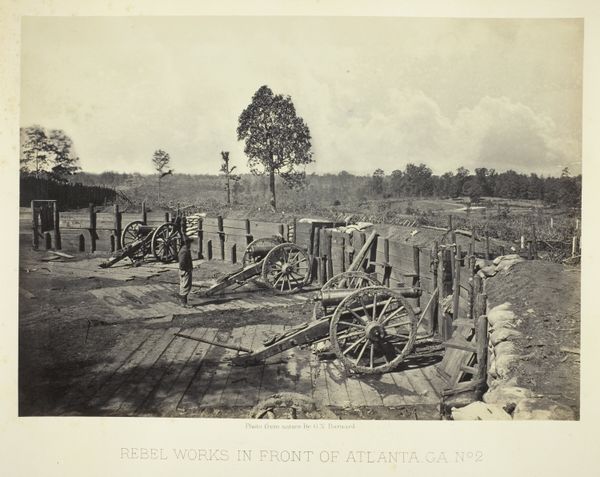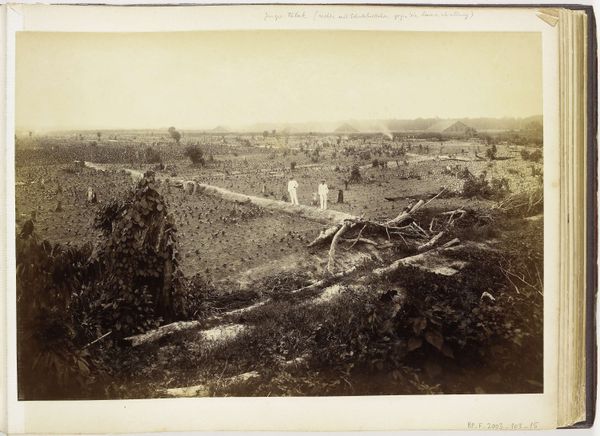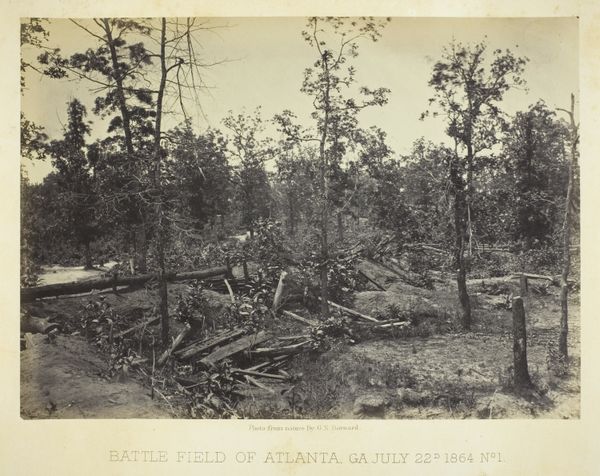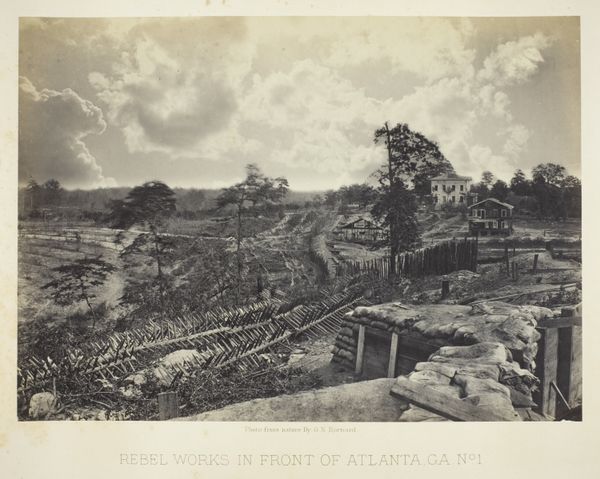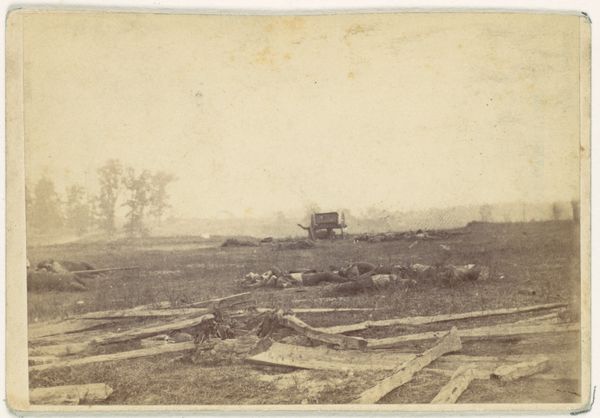
print, photography, site-specific, gelatin-silver-print
#
16_19th-century
# print
#
war
#
landscape
#
photography
#
site-specific
#
gelatin-silver-print
#
men
#
united-states
#
history-painting
Dimensions: 25.5 × 35.8 cm (image/paper); 41 × 50.9 cm (album page)
Copyright: Public Domain
Editor: This gelatin silver print, "Battle Ground of Resacca, GA, No. 4" by George N. Barnard, was made in 1866. The landscape is eerily empty, a stage after the drama. What strikes me is its stillness despite the violence it implies. How do you interpret this work, looking at it from a symbolic lens? Curator: The stillness is potent, isn’t it? Notice how the photographer has composed the scene: the scarred earth, the broken fortifications... all speak volumes about the memory of trauma. Think of these destroyed objects, these remnants, as cultural artifacts. They become symbols, each carrying weight. What emotions do these stark, war-torn images evoke in you? Editor: Definitely a sense of loss and destruction, but also resilience, maybe? The land has been damaged, yet it persists. Curator: Precisely. It's not just a historical record, but also an allegory. Barnard is, in essence, crafting a landscape of memory. How do you think the intended audience, just after the Civil War, might have interpreted these images? Editor: I imagine they saw not just the aftermath of battle, but also the fragility of their nation, and the need for reconciliation. A heavy symbol, a potent reminder. Curator: A powerful connection to collective trauma, wouldn't you agree? Photography freezes these sites in time, imbuing them with enduring cultural significance and ensuring their role in national mythology. Editor: Absolutely. I now see beyond the simple representation, diving into its deeper emotional and symbolic layers. It adds such depth to my understanding. Curator: It is through considering this imagery and how it acts upon the viewer that meaning reveals itself. Hopefully you will carry this forth in your studies.
Comments
No comments
Be the first to comment and join the conversation on the ultimate creative platform.



